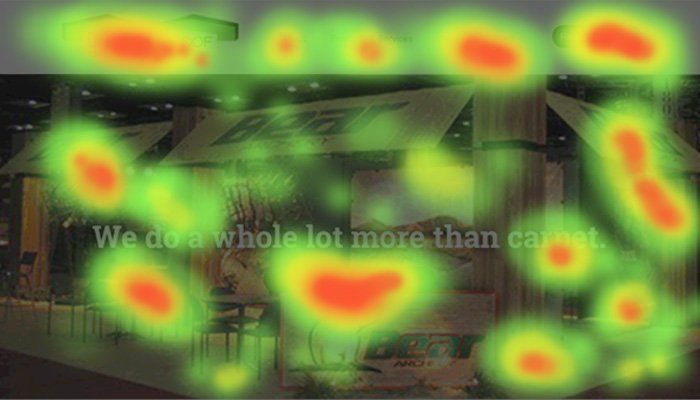Website Heat Maps Can Show You The Way
- By Mark Baker
- •
- 17 Aug, 2016
- •

Every day your online behavior produces loads of useful data for marketers. Whether or not you’re freaked out by some of these Big Brother tracking tactics, it is happening. But take a deep breath; it’s not all as nefarious as if it may seem. In fact, most of this information that records where you go and what you do across the web will actually end up helping you. Website heat mapping and other tools gather information to help improve the overall user experience and are crucial components of growth-driven web design.
It’s important to understand what heat maps are and what they can do for your website. Functionally, they follow the path your mouse takes as it peruses a web page. In many cases, a heat map will collect key data on the mouse itself whether it hovers over images or paces back and forth where a user might be reading copy. Other times, it might record actual clicks and where those clicks occur on a webpage—regardless if that occurs inside a live area or not. Finally, there is a scroll mapping feature which focuses on how the user scrolls along the side.
Various third party providers like hotjar, crazyegg or Qlik offer website heat map technology that is simply plugged into a site’s code. It’s one of many conversation optimization tools to help you make adjustments to your site in order to gain better conversions, turning unknown visitors into known leads. Whether it’s heat mapping or eye tracking, gathering overall page views to track the overall time spent on a site, how we track user interaction can help to create a more intuitive, profitable and enjoyable online experience.
It also leads to gaining the insight needed to make adjustments to a site’s navigation, layout, or how content is presented to the user. Gathering the data from heat maps helps a site determine what is consistently the most interesting information and conversely which information doesn’t garner as much attention.
No one wants to create a clunky website. In the same breath, no one wants to visit a hard-to-navigate site either—especially when sales are on the line. Making small, steady and easy-to-make changes to a site, rather than massive overhauls helps minimize the risk of doing wholescale, one-time website redesigns. It avoids the traditional, more systematic route where a hard, launch date and an “all-in-one” approach is the move.
With growth-driven design, the time to launch is much shorter, and focuses on going live sooner for continuous learning and improvement along the way to eventually help a site reach its peak performance. This practice of redesigning websites is deeply interwoven with marketing and sales numbers. These learnings work to optimize marketing, sales strategies and tactics themselves.
It’s important to understand what heat maps are and what they can do for your website. Functionally, they follow the path your mouse takes as it peruses a web page. In many cases, a heat map will collect key data on the mouse itself whether it hovers over images or paces back and forth where a user might be reading copy. Other times, it might record actual clicks and where those clicks occur on a webpage—regardless if that occurs inside a live area or not. Finally, there is a scroll mapping feature which focuses on how the user scrolls along the side.
Various third party providers like hotjar, crazyegg or Qlik offer website heat map technology that is simply plugged into a site’s code. It’s one of many conversation optimization tools to help you make adjustments to your site in order to gain better conversions, turning unknown visitors into known leads. Whether it’s heat mapping or eye tracking, gathering overall page views to track the overall time spent on a site, how we track user interaction can help to create a more intuitive, profitable and enjoyable online experience.
It also leads to gaining the insight needed to make adjustments to a site’s navigation, layout, or how content is presented to the user. Gathering the data from heat maps helps a site determine what is consistently the most interesting information and conversely which information doesn’t garner as much attention.
No one wants to create a clunky website. In the same breath, no one wants to visit a hard-to-navigate site either—especially when sales are on the line. Making small, steady and easy-to-make changes to a site, rather than massive overhauls helps minimize the risk of doing wholescale, one-time website redesigns. It avoids the traditional, more systematic route where a hard, launch date and an “all-in-one” approach is the move.
With growth-driven design, the time to launch is much shorter, and focuses on going live sooner for continuous learning and improvement along the way to eventually help a site reach its peak performance. This practice of redesigning websites is deeply interwoven with marketing and sales numbers. These learnings work to optimize marketing, sales strategies and tactics themselves.
Mark Baker
Mark Baker is a natural artist. Since starting his first business hand painting graphics onto vehicles in high school, Mark gained experience in the entertainment, sports, and retail industries before founding this company in 1993. Honest and pragmatic, Mark knows that anything can be accomplished with a great communication plan and creative thinking.





